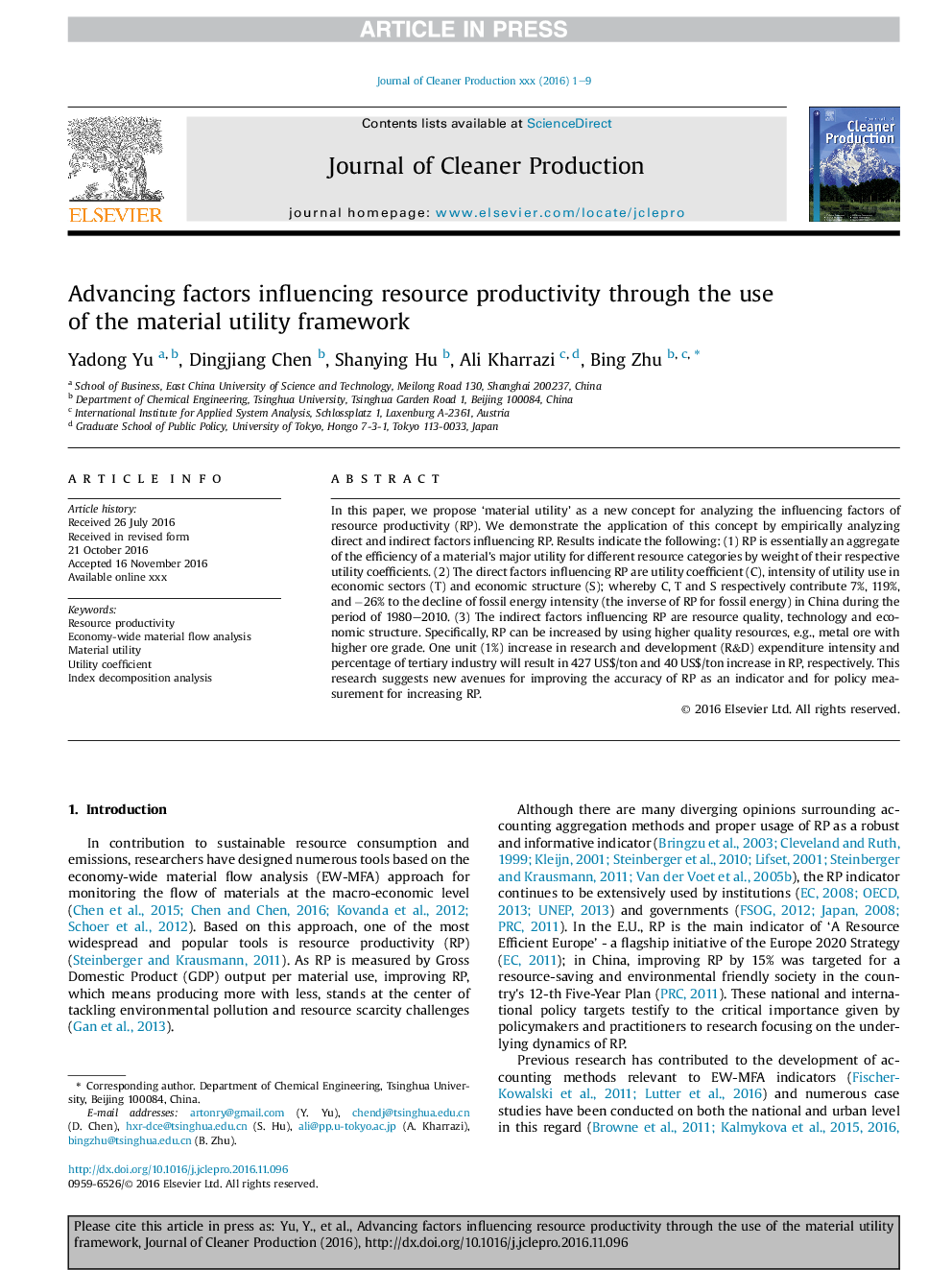ترجمه فارسی عنوان مقاله
عوامل موثر بر بهره وری منابع از طریق استفاده از چارچوب خدمات مواد
عنوان انگلیسی
Advancing factors influencing resource productivity through the use of the material utility framework
| کد مقاله | سال انتشار | تعداد صفحات مقاله انگلیسی |
|---|---|---|
| 96490 | 2017 | 9 صفحه PDF |
منبع

Publisher : Elsevier - Science Direct (الزویر - ساینس دایرکت)
Journal : Journal of Cleaner Production, Volume 142, Part 4, 20 January 2017, Pages 1892-1900
ترجمه کلمات کلیدی
بهره وری منابع، تجزیه و تحلیل جریان مواد در سطح گسترده ای از اقتصاد، ابزار مفید، ضریب سودمند، تجزیه تحلیل تجزیه و تحلیل،
کلمات کلیدی انگلیسی
Resource productivity; Economy-wide material flow analysis; Material utility; Utility coefficient; Index decomposition analysis;

